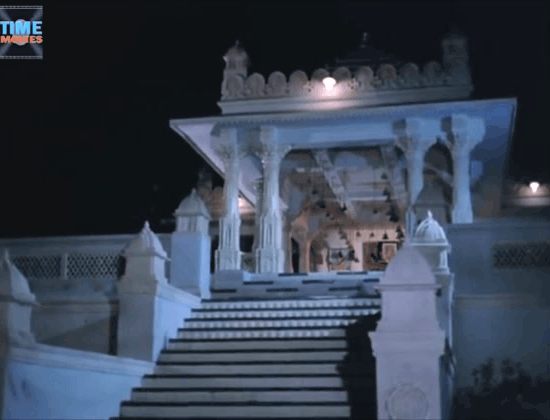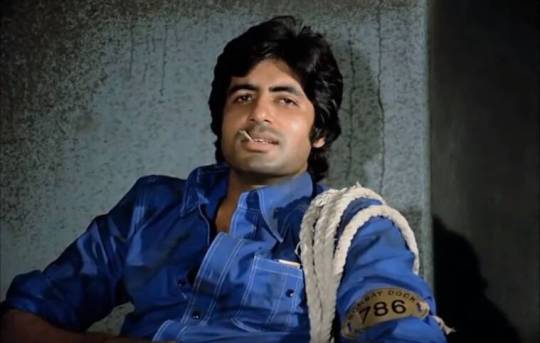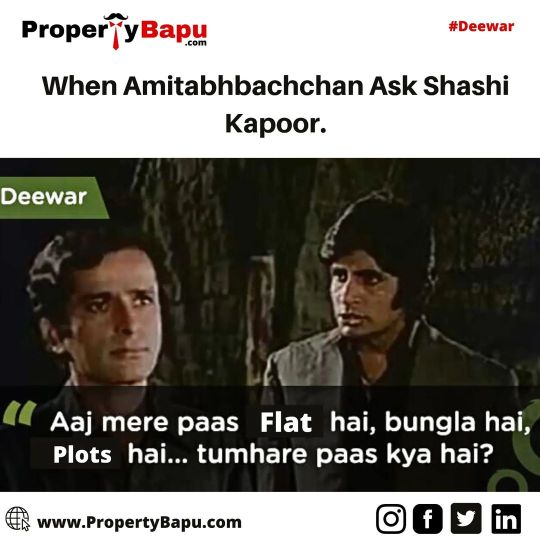#deewar
Text






मेरे गुनाहों की सज़ा मेरी माँ को मत दो
🇩 🇪 🇪 🇼 🇦 🇷
1975
#deewar#amitabh#amitabh bachchan#the 1975#old hindi songs#old hindi movies#hindi movies#hindi cinema#old bollwood#bollywoodedit#classic#vintage#evergreen#bollywood#dialogues#shashi#nirupa roy
27 notes
·
View notes
Text
ill be throwing uff tumhare yeh usool tumhare yeh adarsh everytime someone tries to shame me in the name of false respect and beliefs

#if you can't tell just rewatched deewar yesterday#deewar#amitabh bachchan#hindi movie dialogues#movie dialogues#desi tag#desi tumblr#bollywood#desiblr#old bollywood
103 notes
·
View notes
Text
Amitabh Bachchan's Early Movies as a Young Actor

The name that resonates with the core of Indian cinema - Amitabh Bachchan. Long before he was the 'Shehanshah' or the 'Angry Young Man' of Bollywood, this remarkable actor was a bright-eyed beginner navigating his path through the turbulent tides of Indian cinema. This blog post will take a stroll down memory lane, exploring Amitabh Bachchan's early cinematic journey and his evolution as a young actor.
The Introductory Act
Amitabh Bachchan first stepped into the limelight with the film 'Saat Hindustani' in 1969. Although the movie did not fare exceptionally well at the box office, Bachchan's performance was noted. This film not only served as his debut but also laid the groundwork for him to step into more challenging roles with ease.
A String of Early Roles
His initial journey was marked by a string of roles in movies like 'Anand' (1971), 'Reshma Aur Shera' (1971), and 'Parwana' (1971). These films allowed Bachchan to showcase his talent as a young actor on the rise.
In the much-acclaimed film 'Anand', Amitabh Bachchan shared the screen with Rajesh Khanna. Despite being a supporting role, Bachchan managed to make an impression with his performance as the stoic Dr. Bhaskar Banerjee, showcasing his flair for subtle, intense performances.
The Breakthrough: Power-packed Performances
The year 1973 marked a significant turn in Amitabh's career, starting with 'Zanjeer', where he stepped out of supporting roles and took centre stage. The audience got their first glimpse of the 'Angry Young Man', and Amitabh Bachchan became a household name. His intense performance set a new tone for the Hindi film hero, breaking away from the romantic hero mould prevalent during that time.
This era of Bachchan’s career was marked with a slew of unforgettable performances in movies such as 'Deewar' (1975) and 'Sholay' (1975). These two films are considered classics of Indian cinema and are indicative of Bachchan's growing prowess and popularity. His exemplary performances as Vijay Verma in 'Deewar' and as Jai in 'Sholay' are still considered iconic.
Rising to Stardom: The Resilient Journey
Despite experiencing struggles early in his career, Bachchan’s determination did not wane. Even as a young actor, his dedication was evident in every role he undertook. His constant desire for innovation and self-improvement led him to be flexible in his roles, further expanding his acting repertoire.
Films like 'Kabhie Kabhie' (1976) and 'Muqaddar Ka Sikandar' (1978) epitomized this aspect. Whether he was enacting the role of a passionate poet in 'Kabhie Kabhie' or playing a heartbroken orphan in 'Muqaddar Ka Sikandar', Bachchan exuded an earthy appeal that was swiftly resonating with the masses, making him one of the most sought-after actors of his time.
Beyond the 'Angry Young Man'
While his 'Angry Young Man' persona was greatly loved by audiences, Bachchan did not allow himself to be typecast. He showcased his versatility by taking up divergent roles. For instance, his unforgettable performances in 'Don' (1978) and 'Mr. Natwarlal' (1979) clearly depicted his comfort with both dramatic roles and light-hearted, charming characters.
In essence, Amitabh Bachchan's compelling work as a young actor brought a fresh and enduring angle to the Indian cinema industry. His early works stand testament to a star who was ahead of his time and made a mark with the sheer power of his talent. Even today, the charisma and magnetism of young Amitabh Bachchan live on, etched forever in the annals of Indian cinema.
0 notes
Text
Episode 148 - Two wives, or two brothers? Daag and Deewaar
We return to the career of Yash Chopra with two iconic mid-70s blockbusters: one, the first film to carry the YRF name and the other, maybe the most influential Bollywood film ever made.
Show notes:
Past Yash Chopra films we have discussed: Netflix and Dil: High and Low - Cinema Marte Dum Tak and The Romantics and Yaasssh Chopra: Lamhe & Veer-Zaara with Manish Mathur
Zanjeer and the Angry Young Man
Yash Chopra
Rajesh Khanna
Thomas Hardy and the cad awareness book
"Ab Chahe Maa Roothe"
Comparisons to Douglas Sirk
INTERVAL ("Ni Main Yaar Manana Ni" from Daag)
Deewaar
Gunga Jumna and Mother India
Matt is the evil brother
Influences on Hong Kong cinema and Slumdog Millionaire
What can we bring to a conversation about this film?
Bachchan: Back to the Beginning
NEXT TIME: Hindi Horror Halloween
Find us on Apple Podcasts! and Stitcher! and audioBoom! and iHeartRadio! and Spotify! and Google Podcasts!
Thank you to Becca Dalke for the artwork!
Follow us on Twitter! Like us on Facebook!
#Yash Chopra#Amitabh Bachchan#Rajesh Khanna#Rakhee#Rakhee Gulzar#Sharmila Tagore#Prem Chopra#Manmohan Krishna#Iftekhar#Daag#Deewar#Salim Khan#Javed Akhtar#Salim Javed#Sashi Kapoor#Neetu Singh#Parveen Babi#Nirupa Roy#Madan Puri#Bollywood#Hindi Cinema
1 note
·
View note
Video
Legendary Deewar Movie Fight Scene Amitabh Bachchan's Iconic Battle
0 notes
Text

Gorakhpur News : पुलिस चौकी की दीवार गिरने से आठ साल की बच्ची हुई मौत,
https://bit.ly/3YllyJ5
Gorakhpur News : एसएसपी डॉ. कार्रवाई की गौरव ग्रोवर ने कहा कि दीवार ढहने से बच्ची की मौत हुई है। तो प्रकरण की जांच एसपी सिटी को सौंपी गई है
0 notes
Photo

Mara pas propertybapu. . .@amitabhbachchan . .#deewar #amitabhbachchan #shashikapoor #dharmaproductions #realestate #realtor #realestateinvesting #instalike #comment4comment #propertybapu #jaipurdiaries #loveislove https://www.instagram.com/p/Cg05Fbqv3fb/?igshid=NGJjMDIxMWI=
#deewar#amitabhbachchan#shashikapoor#dharmaproductions#realestate#realtor#realestateinvesting#instalike#comment4comment#propertybapu#jaipurdiaries#loveislove
0 notes
Text
parents: my daughter must be studying
the daughter in question:


19 notes
·
View notes
Text

Celebrating 49 years of #Deewaar (24/01/1975).
Deewaar, one of the greatest Indian films of all time, was directed by the legendary Yash Chopra. It continues to captivate audiences with its powerful performances, compelling storytelling, and timeless themes. A major critical and commercial success upon its release, Deewar features #AmitabhBachchan in an iconic role as Vijay Verma, a dock worker who becomes a powerful underworld figure. His performance is celebrated for its raw emotion and intensity.
The film’s memorable soundtrack, composed by R.D. Burman, includes classics like "Kehdoon Tumhe, Ya Chup Rahun" and "Maine Tujhe Maanga, Tujhe Paaya Hai", which have become synonymous with the film. The entire cast, particularly Amitabh Bachchan and Shashi Kapoor, deliver outstanding performances that capture the complexities of their characters. The film also stars Neetu Singh, Nirupa Roy, Parveen Babi, Iftekhar, Madan Puri, Satyen Kappu, and Manmohan Krishna.
Deewar's groundbreaking portrayal of poverty and crime in India remains powerful and relevant, exploring themes of brotherhood, corruption, and betrayal. The moral dilemmas faced by those living in poverty are highlighted through its screenplay, written by Salim–Javed, and the brilliant direction of Yash Chopra.
Nearly five decades later, Deewar continues to resonate with audiences, cementing its place in Indian cinematic history. Its impact on Indian cinema and global audiences is undeniable. For anyone who hasn’t seen Deewar, it’s a must-watch. The powerful performances, unforgettable dialogues, and timeless songs make it an essential experience for any fan of Indian cinema.
As we celebrate 49 years of this cinematic masterpiece, let's acknowledge the talents behind it: Cinematography by Kay Gee; Editing by T. R. Mangeshkar & Pran Mehra; salim Music by R. D. Burman; Lyrics by Sahir Ludhianvi; Screenplay by Salim–Javed; Production by Gulshan Rai. Let's raise a glass to Deewar, a film that will forever be remembered as a true classic in Indian cinema.
#deewar (1975)#yash chopra#amitabh bachchan#shashi kapoor#neetu singh#salim javed#r d burman#sahir ludhianvi#parveen babi#madan puri#satyen kappu#manmohan krishna
4 notes
·
View notes
Note
Aaj main tere college ke saamne se nikla hehe 🤭
Ladkiyaan taadne?? 😂🤣
12 notes
·
View notes
Text
@srbachchan sir !
🙏🏽❤️❤️❤️😘❤️❤️❤️🙏🏽
2 notes
·
View notes
Text
90s Evergreen Bollywood Movies Updated List 2023: You Can Watch Them Anytime
Are You Searching for a 90s Blockbuster Movie? Btown Stories Provide Full Information About Bollywood Evergreen Hindi Movies and a List of 90s Movies Super Hit which You Can Watch Anytime. Our Blog Gives Full Information on the Sport, Btown Gossip, National News, International News, Etc. For More Detail, Visit Us Today!

#3 Idiots#90s evergreen bollywood movies#bollywood old movies#Chalte Chalte Movie Cast#Deewar Movie Cast#Evergreen Bollywood Hindi Movies#evergreen bollywood movies#Evergreen Hindi Movies#evergreen old hindi movies#hindi evergreen movies#Kabhie Kabhie Cast#Kuch Kuch Hota Hai Cast#Name old hindi movies#purani hindi movie#Sholay Movie Cast Name
1 note
·
View note
Link
Contact 8527186459 for doubts
#numerology#learnnumerology#astrology#learnastrology#vastu#learnvastu#learnvastushastra#Vastu Tips for Wall Clock#anuranjinee gupta videos#दीवार पर घडी कहाँ लगाएँ#इस दिशा में घडी लगायें और खोलें सौभाग्य के दरवाज़े#wall clock kis disha me lagaye#deewar ghadi kis disha mein lagaye#Wall Clock किस दीवार पर लगाएँ#ghadi lagane ki sahi disha#Wall clock placement at home#Wall clock Numerology#numerology prediction#numerology calculator#numerology 2022
0 notes
Text
VIDEO: दीवार प्लास्टर करने का अनोखा तरीका, दोनों टांगों को हवा में उठाकर चुटकियों में पूरा कर दिया काम
VIDEO: दीवार प्लास्टर करने का अनोखा तरीका, दोनों टांगों को हवा में उठाकर चुटकियों में पूरा कर दिया काम
जब घर या कोई ईंट से बने ढांचे का निर्माण होता है तो उसमें सीमेंट से प्लास्टर जरूर किया जाता है. इससे ईंट मजबूती से टिके रहते हैं और हवा, पानी आदि जैसी चीजों का उसपर असर नहीं पड़ता जिससे वो जल्दी कमजोर नहीं पड़ते. इसके अलावा ईंटों को चिकनाई देने के लिए, और ढांचे को समतल करने के लिए भी प्लास्टर किया जाता है. अगर आपने प्लास्टर (Smart way to plaster video) होते कभी देखा होगा तो जानते होंगे कि ये काफी…
View On WordPress
#ajab gajab news#ajeebogareeb khabar#amazing news#deewar par jaldi plaster kaise karen#hatke khabar#hatke news#how to plaster wall#khabren zara hatke#men amazing trick to plaster fast#men plastering wall video#omg khabar#omg news#plaster karne ka jugaad#plaster technique#trending news#Viral News#weird news#world news
0 notes
Note
There is a difference between Bollywood and Bombay cinema?
listen, subcontinental cinema began in bombay; the very first exhibition of the lumieres' cinematographe was held there in 1896, a few months after its debut in paris, 1895. this event predates the discursive existence of bollywood and hollywood. shree pundalik and raja harishchandra, the films that are generally considered the very first subcontinental features were also exhibited there first.
subcontinental cinema under british colonialism was produced in certain metropolitan centers such as lahore, hyderabad, and calcutta; bombay was just one of them. in 1947, when the indian nation state was formally inaugurated, the idea of a "national cinema" began forming, but given the cultural and linguistic heterogeneity of the indian union, this was quite untenable. regional popular cinemas flourished well into the 1950, 60s, 70s, and 80s and various art cinemas began taking shape alongside.
under the economy that i'm going to completely elide as "nehruvian "socialism"" bombay cinema focused on broadly "socialist" themes, think of awara (1951), do beegha zameen (1953), pyaasa (1957), all of which focus on inequality in indian economy and society from different perspectives. these films were peppered in with historical dramas, and adaptations from literature, but the original stories tended towards socialist realism. reformist films centering the family generally waxed poetic on the need to reform the family, but i haven't seen enough of these to really comment on them.
the biggest hit of the 70s, sholay (1975) was about two criminals, posited as heroes fighting gabbar singh who was attacking village folk. deewar (1975) also had two heroes, and the stakes were the two brothers' father's reputation; the father in question was a trade union leader accused of corruption.
"alternative cinema" included mani kaul's uski roti (1969) and Duvidha (1973) both of which were situated away from the city. then there's sayeed mirza and his city films, most of them set in bombay; arvind desai ki ajeeb dastan (1978), albert pinto ko gussa kyun aata hain (1980), saleem langre pe mat ro (1989) which are all extremely socialist films, albert pinto was set in the times of the bombay textiles strike of 1982 and literally quotes marx at one point. my point is that bombay cinema prior to liberalization was varied in its themes and representations, and it wasn't interested in being a "national cinema" very much, it was either interested in maximizing its domestic profits or being high art. note that these are all hindi language films, produced in bombay, or at least using capital from bombay. pyaasa, interestingly enough is set in calcutta, but it was filmed in bombay!
then we come to the 1990s, and i think the ur example of the bollywood film is dilwale dulhania le jayenge (1995) which, in stark contrast to the cinema that preceded it, centered two NRIs, simran and raj, who meet abroad, but epitomize their love in india, and go back to england (america?) as indians with indian culture. this begins a long saga of films originating largely in bombay that target a global audience of both indians and foreigners, in order to export an idea of india to the world. this is crucial for a rapidly neoliberalizing economy, and it coincides with the rise of the hindu right. gradually, urdu recedes from dialogue, the hindi is sankritized and cut with english, the indian family is at the center in a way that's very different for the social reform films of the 50s and 60s. dil chahta hai (2001) happens, where good little indian boys go to indian college, but their careers take them abroad. swadesh (2004) is about shah rukh khan learning that he's needed in india to solve its problems and leaves a job at NASA.
these are incidental, anecdotal illustrations of the differences in narrative for these separate eras of cinema, but let me ground it economically and say that bollywood cinema seeks investments and profits from abroad as well as acclaim and viewership from domestic audiences, in a way that the bombay cinema before it did not, despite the success of shree 420 (1955) in the soviet union; there were outliers, there always have been.
there's also a lot to say about narrative and style in bombay cinema (incredibly diverse) and bollywood cinema (very specific use of hollywood continuity, intercut with musical sequences, also drawn from hollywood). essentially, the histories, political economies, and aesthetics of these cinemas are too differentiated to consider them the same. bombay cinema is further internally differentiated, and that's a different story altogether. look, i could write a monograph on this, but that would take time, so let me add some reading material that will elucidate this without sounding quite as fragmented.
bollywood and globalization: indian popular cinema, nation, and diaspora, rini bhattacharya mehta and rajeshwari v. pandharipande (eds)
ideology of the hindi film: a historical construction, madhav prasad
the 'bollywoodization' of the indian cinema: cultural nationalism in a global arena, ashish rajadhyaksha
the globalization of bollywood: an ethnography of non-elite audiences in india, shakuntala rao
indian film, erik barnouw and s. krishnaswamy (this one's a straight history of subcontinental cinema up to the 60s, nothing to do with bollywood, it's just important because the word bollywood never comes up in it despite the heavy focus on hindi films from bombay, illustrating my point)
431 notes
·
View notes
Text

Gorakhpur News : पुलिस चौकी की दीवार गिरने से आठ साल की बच्ची हुई मौत,
https://bit.ly/3YllyJ5
Gorakhpur News : एसएसपी डॉ. कार्रवाई की गौरव ग्रोवर ने कहा कि दीवार ढहने से बच्ची की मौत हुई है। तो प्रकरण की जांच एसपी सिटी को सौंपी गई है
0 notes